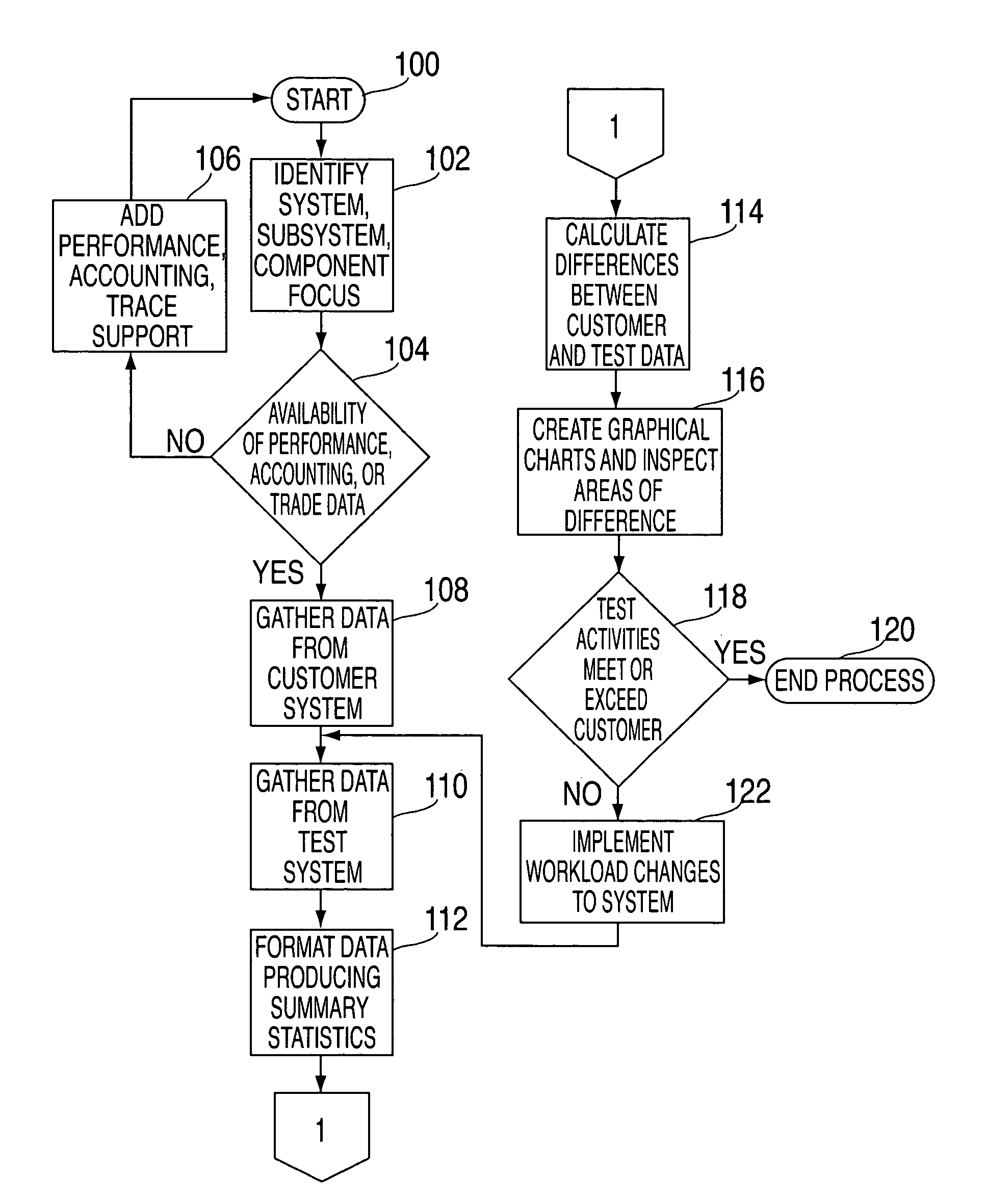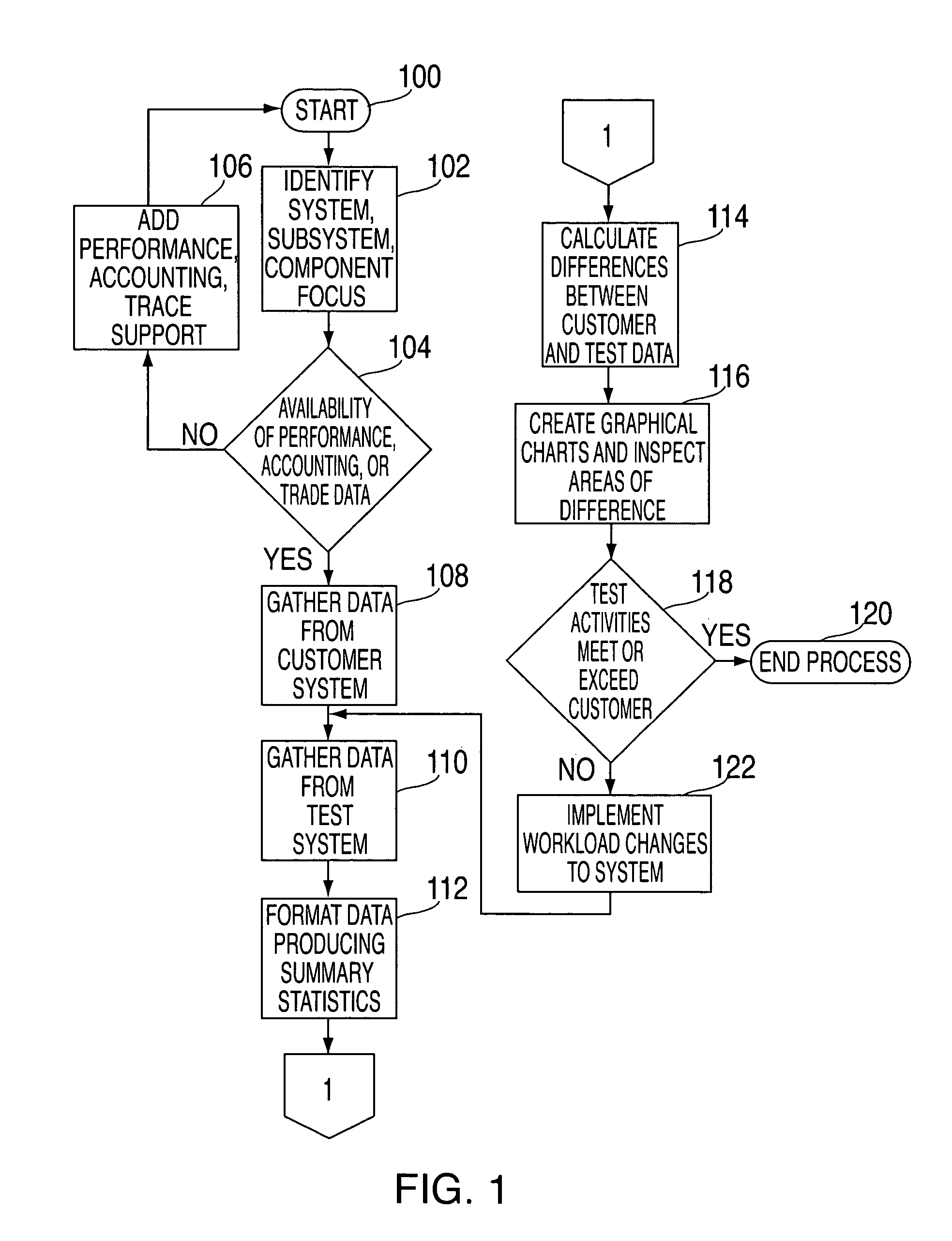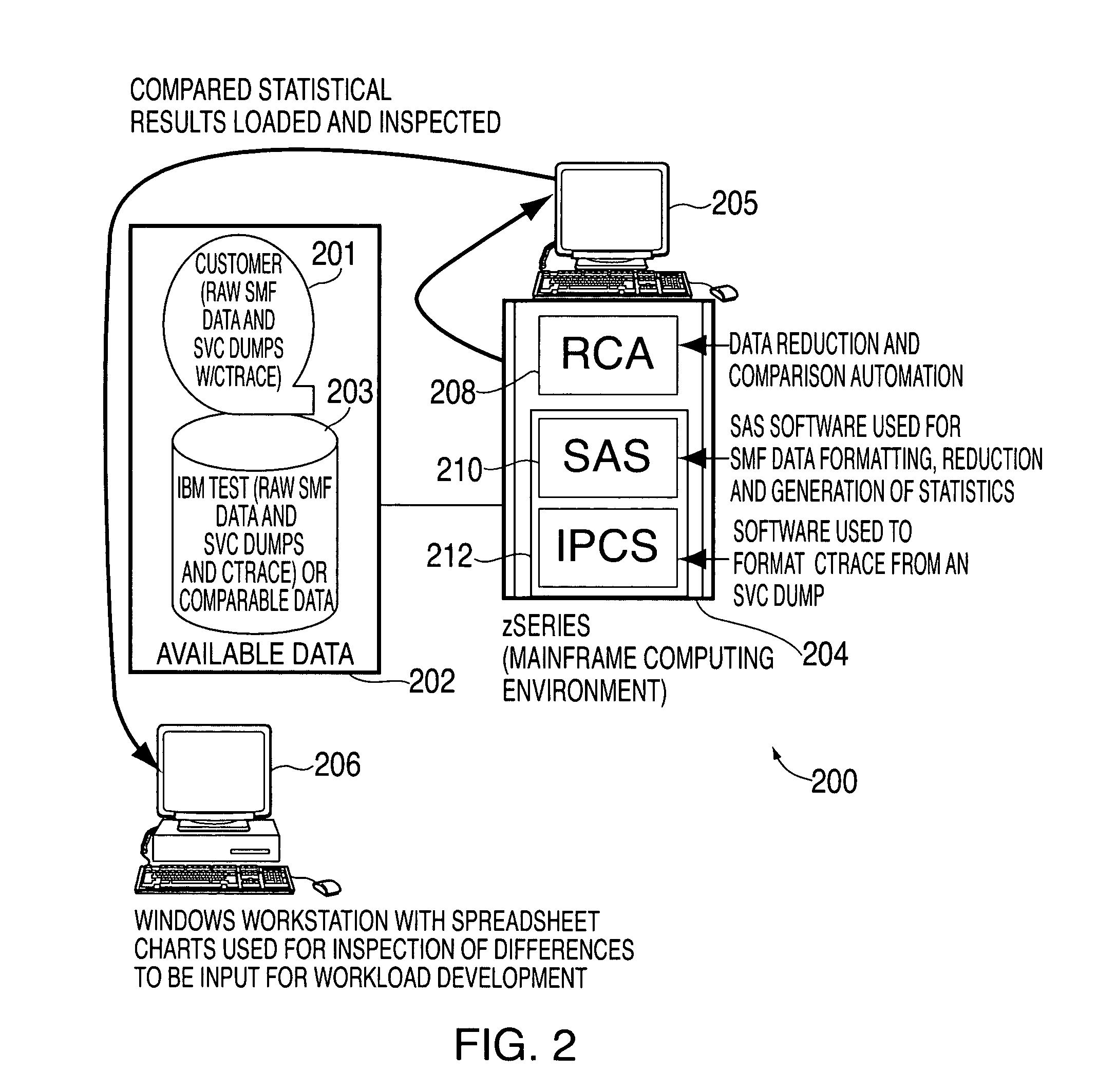Method, system, and storage medium for using comparisons of empirical system data for testcase and workload profiling
a workload and empirical system technology, applied in the field of software testing, can solve the problems of not having a defined process to understand the internal activities of a workload, no measure of whether or not a test system is being driven in a similar or more comprehensive fashion, and limited operation profiling
- Summary
- Abstract
- Description
- Claims
- Application Information
AI Technical Summary
Benefits of technology
Problems solved by technology
Method used
Image
Examples
Embodiment Construction
[0023]FIG. 1 shows a flow chart of an exemplary method for using comparisons of empirical system data for testcase and workload profiling. The method begins at the start 100, by identifying a system, subsystem, and component focus for testing at 102. The availability of performance, accounting, or trace data is determined at 104. If such data is not available, performance, accounting, and trace support is added at 106. Otherwise, data is gathered from the customer system at 108 and data is gathered from the test system at 110. Data is formatted to produce summary statistics at 112. Then, differences are calculated between the customer and test data at 114, using the statistical data and other analysis for selected data points. Graphical charts are created and areas of difference are inspected at 116. If the test activities meet or exceed the customer's test activities at 118, the process ends at 120. Otherwise, workload changes to the test system are implemented at 122 and control l...
PUM
 Login to View More
Login to View More Abstract
Description
Claims
Application Information
 Login to View More
Login to View More - R&D
- Intellectual Property
- Life Sciences
- Materials
- Tech Scout
- Unparalleled Data Quality
- Higher Quality Content
- 60% Fewer Hallucinations
Browse by: Latest US Patents, China's latest patents, Technical Efficacy Thesaurus, Application Domain, Technology Topic, Popular Technical Reports.
© 2025 PatSnap. All rights reserved.Legal|Privacy policy|Modern Slavery Act Transparency Statement|Sitemap|About US| Contact US: help@patsnap.com



